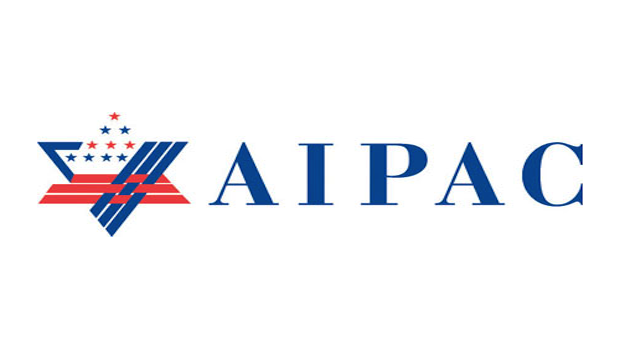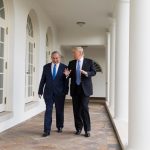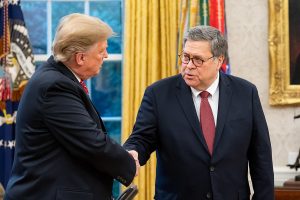by Mitchell Plitnick
Every year, anyone who works on United States policy toward Israel, Palestine, or the broader Middle East watches the annual policy conference of the American-Israel Public Affairs Committee (AIPAC) very closely. At that conference, we expect not only to find out a great deal about where the US and Israeli governments stand at the moment, but also what is likely to occupy the attention of Congress for the coming year regarding Middle East policy.
At last year’s conference, then-candidate Donald Trump’s appearance and warm reception caused one of the deepest divides in the Jewish community in recent memory. AIPAC’s day-after public apology to President Barack Obama for the ovations that Trump’s sharply critical words drew was a landmark event, and was an incident that the powerful lobbying group was hoping to bury this year.
AIPAC wanted their 2017 conference to be one that brought its supporters–who span a considerable political spectrum apart from Middle East policy–back together, and one that also set a clear agenda for the group’s activities for the first year of the Trump Administration. It was not entirely successful in either goal.
Jewish Extremists Attack Protesters
Some of this year’s most dramatic events occurred outside the conference doors. Members of the so-called “Jewish Defense League” (JDL) demonstrated outside the conference. They were there ostensibly as a counter to the groups protesting AIPAC’s support for Israeli policies, especially the ongoing occupation of the West Bank and Gaza Strip, which is about to enter its 50th year.
JDL members, however, attacked an unarmed 55-year old Palestinian man and at least one young Jewish protester with the anti-occupation Jewish group IfNotNow.
AIPAC must have been relieved that the incidents garnered little mainstream media coverage. The JDL members, whose coordinator said they were there to “protect Jews in danger of being attacked,” waved flags and wore t-shirts bearing the fist inside a Star of David that is a symbol of the outlawed Israeli political party Kach. That party was expelled and made illegal in Israel due to its outspoken racism, and has since been listed as a terrorist organization by the United States, the European Union, Canada, and, most notably, Israel.
The JDL, while not listed as a terrorist organization by the United States, has been accused, and some of its members convicted, of terrorist acts in the U.S. in the past. As Lara Friedman of Americans for Peace Now tweeted, “If these thugs had been under the flag of an Arab/Muslim FTO (foreign terrorist organization, which Kach is), (it) would have been huge news.”
Still, despite the lack of coverage, there can be little doubt that ongoing actions by IfNotNow, a group of Jewish millennials, signals a deepening breach in the Jewish community around Israel’s occupation of Palestinian lands. In an attempt to reach out to both AIPAC supporters and opponents of the occupation, Knesset Member Tamar Zandberg, of Israel’s Meretz party, spoke both inside the conference and outside to the protesters, earning her severe criticism from the Israeli right.
Zandberg became one of the few links between the scene outside the conference and what was going on inside.
Where’s the Two-State Solution?
Perhaps the most notable aspect of the conference this year was the scant mention that was made from most of the featured speakers of the two-state solution to the Israeli-Palestinian conflict. Officially, AIPAC still supports the two-state solution, but that support is much weaker than it has been in the past.
In the wake of the presidential election last November, AIPAC pulled mention of the two-state solution from its list of talking points on its web site. The idea does appear elsewhere on the site, but clearly there was a decision taken to de-emphasize it in the wake of the Republican victory in November, after that party had removed support for two states from its party platform. The Republican decision, AIPAC’s response to it, and Donald Trump’s ambiguous statements about the two-state solution have created a great deal of confusion about what the United States’ vision for a solution is. This confusion is only magnified by the fact that Israel’s prime minister, Benjamin Netanyahu, pays only the barest lip service to a two-state solution and most of his governing coalition explicitly opposes the creation of a Palestinian state.
House Minority Leader Nancy Pelosi read out a letter, signed by 191 House members (including two Republicans) and backed by AIPAC’s liberal competitor, J Street, calling on Trump to reaffirm U.S. support for the two-state solution. Pelosi got enough applause to make it clear that this long-time U.S. position still enjoyed significant support among the AIPAC audience. It also set off partisan sniping from the stage, demonstrating that, on this issue like so many others, there is an enormous partisan divide and that, despite AIPAC’s efforts at unity, this divide is reflected in the pro-Israel lobby as well.
With peace negotiations off the table, for the moment at least, AIPAC’s legislative agenda focused on undermining the Joint Comprehensive Plan of Action with Iran (the nuclear deal) and a bill that simultaneously attacks the United Nations and extends protections against boycotts of Israel to boycotts of its settlements. These are not new issues for AIPAC. But the focus on these issues, and in support of AIPAC-sponsored bills that were brought to Congress shortly before the conference, indicates that AIPAC is satisfied to leave the Palestinian issue where it is and instead is turning its lobbying effort to ensuring that criticism of Israel will carry a very high price and that the Trump Administration will have more tools to thwart any further cooling of relations between the US and Iran.
AIPAC Loves Nikki Haley
The story that many seemed to focus on coming out of the conference this year was the popularity of U.S. Ambassador to the United Nations Nikki Haley. Haley benefits from being both a personable conservative and a crusader for the Netanyahu government in the UN. Some observers at AIPAC believed she had taken her first step toward securing a future presidential nomination. That is a vast overstatement, but there is no doubt that Haley was the one person who came out of the conference riding a rising tide.
AIPAC and its supporters had always had a guarded, and sometimes even hostile, view of Samantha Power, Haley’s predecessor under Barack Obama. But Haley has long been clear that her support for Israel is not dimmed one bit by Israel’s ongoing occupation, and this has won her unambiguous AIPAC support. She is in a perfect position in an administration that disdains international cooperation or any other arrangements that put even the slightest limits on U.S. freedom of action. That means that most of Haley’s job is establishing that the United States will do everything in its power to ensure that the United Nations is as marginalized as possible when it comes to Israel.
Nothing pleases the AIPAC crowd more than this. Haley’s unqualified defense of Israel at the UN combines well with her broader image as a “compassionate conservative” to make her AIPAC’s shining star of 2017. Still, it’s worth recalling that her anti-choice stance and support for the flying of the Confederate flag–until the 2015 Charleston Church Shooting made it politically unsustainable—are likely to mean most AIPAC attendees will not be as supportive of her outside that conference hall as they were inside it.
Success or Failure?
In the last analysis, this conference can be viewed as a glass half full or half empty. It certainly was not the divisive moment for the pro-Israel community that last year’s confab was. Yet the schisms that were so apparent in 2016 were shown not to have healed.
On a policy level, AIPAC is drifting and appears unsure of itself. The scene outside the conference was one where the Jewish alt-right extremists of the JDL were clearly closer to AIPAC’s side than the much more moderate protesters who are urging an end to the occupation, but are not advocating any anti-Israel measures. The two-state solution is still in the air, and while the Republicans have withdrawn support for it, no one has actually come out against it, as many in the current Israeli government have done.
Nikki Haley may have emerged as a new hero, but there was very little substance from the other big speakers. Vice President Mike Pence tried to prop up President Trump’s indecisive image by again dropping the idea of moving the U.S. embassy to Jerusalem (which he said the President was “seriously considering”) but few put much stock in this after the flip-flopping Trump has already done on the issue. It was also an unspoken reality that Trump’s now-confirmed pick for Ambassador to Israel, David Friedman, was needlessly divisive. It increased partisanship on the issue of Israel and once more laid bare the splits in the Jewish community on the issue.
AIPAC moves on from its 2017 conference with its influence on Congress still strong, but clearly slipping, as it is torn between pushing a bipartisan agenda and working with the new President. The indecisiveness of the potent lobbying group is hardly surprising, given the lack of any sort of vision coming from either the Israeli Prime Minister or the U.S. President.
That creates an opening for other forces. In order to take advantage of it, however, someone, be it an Israeli leader or a U.S. liberal one, must articulate an alternative vision of the future, one that is achievable even if far off, and one that can inspire supporters of both Israelis and Palestinians. The window for that leader is open, but one cannot say for how long.





